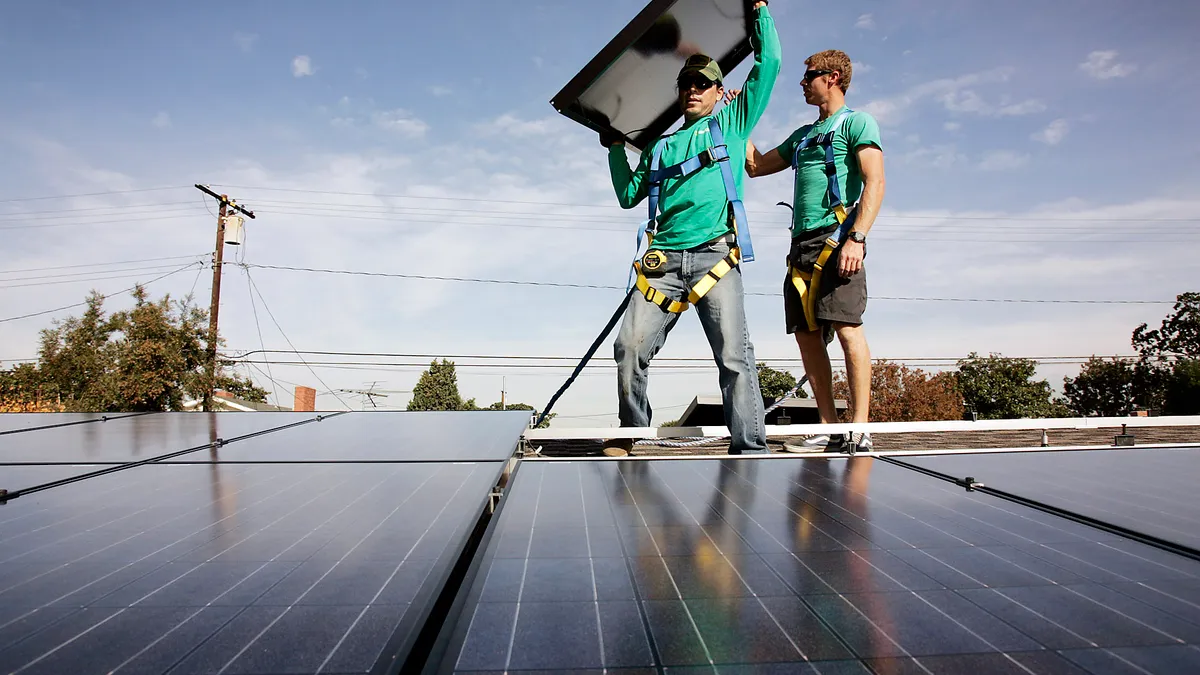The following is a contributed article by Chris Rauscher, Sunrun's director for Policy & Storage Market Strategy.
The cost and performance of distributed energy resources (DERs) have improved faster than anyone would have expected.
Between 2010 and 2017, residential rooftop solar system costs fell over 60%, and lithium-ion battery prices fell 79%. Inverter prices have also fallen, while their functionality has improved in ways that enable the integration of higher penetrations of DERs onto the grid.
Further significant cost reductions are coming, especially on battery prices and soft costs associated with permitting. Though only about 1% of US vehicles are electric today, some forecasts have them as high as 65% of new US vehicle sales in 2050.
These improvements in cost and performance, combined with rising awareness among consumers, and an increasingly unreliable and expensive electric grid, create an opportunity for DERs to provide services in both retail and wholesale markets in ways that can greatly benefit consumers, community resiliency and reliability.
DERs can enable customers to control when and how the energy is used. This provides value to customers in the form of savings, resiliency during outages and predictable pricing while providing valuable demand side resources to the broader electricity grid. This results in less expensive electricity for both the owners of the solar and storage and for all customers on the grid.
All of these benefits need to be maximized, not deterred, which is why the Federal Energy Regulatory Commission (FERC) should continue to enable more opportunities for DERs to contribute to the future of the grid. The rapid customer deployment will not stop — we must unlock the potential of this fleet to create a more efficient grid for all.
The integration of residential DERs into wholesale markets is already taking place in ISO New England territory. Starting in 2022, rooftop solar and battery systems will supply 20 megawatts of energy capacity to ISO New England, involving approximately 5,000 New England homes. This will represent one of the largest uses of aggregated residential solar and storage in the world, and the first in a US wholesale market.
Winning a bid in a forward capacity market validates the ability of distributed solar and battery storage to bring the benefits of clean, renewable energy to New England residents and throughout the country — and to compete on price with legacy resources.
DER systems can be deployed and managed to meet the operational requirements of the ISO market, while also delivering energy savings and backup power to families. This is another step in the transformational shift away from the traditional centralized electricity model, with big power plants, towards a system powered by local clean energy like rooftop solar and batteries.
Wide-scale deployment of DERs currently faces roadblocks from some RTO/ISOs that have not yet fully embraced a more decentralized and truly consumer-centric electricity grid. RTO/ISOs can learn from the national leadership that ISO-NE and the New England states have shown in order to make progress on how DER deployment can provide benefits to consumers across the country.
For instance, FERC should direct other RTOs/ISOs to provide market access and participation models for DER aggregations in a manner that takes advantage of their full capabilities, including the ability to inject energy to the grid, and the freedom to provide non-conflicting services at both the retail and wholesale levels.
There is an exciting potential for RTOs and ISOs such as PJM to more holistically consider involvement of DER aggregation by lowering its 10-hour discharge requirement for storage resources to participate in its capacity market. This will enable storage to displace more expense, dirtier peaker plants with no reduction in system reliability.
States and state-regulated investor owned utilities have authority under state law to establish non-discriminatory interconnection requirements for DERs that will export energy to the grid. But FERC should not allow state-regulated distribution utilities to obstruct DER access and participation in wholesale markets.
This is a challenge that ISO-NE has been able to address but other RTO/ISOs still need to resolve. Maintaining discriminatory requirements for DERs would not only be unreasonable and unduly discriminatory, but counterintuitive to the FERC and national policy of "fostering competition in wholesale markets."
FERC has a strong record of facilitating the entry of new generators to compete with incumbents and should continue opening doors for innovation and progress through access to competitive markets.
Thankfully FERC’s jurisdiction is straightforward: sales from DER aggregators into wholesale markets are sales at wholesale in interstate commerce. This clarifies any attempt by distribution utilities or others to restrict DER participation.
Furthermore, it creates a clear path for communities — from homes and apartments, to small businesses, schools and churches — to play a greater role in strengthening our grid by generating clean onsite power while supplying needed energy services to the wholesale markets.
While DERs currently represent a small portion of overall electric generation, in some regions they have exceeded 5% and are approaching double digits. Rather than wait, it is timely for FERC to create the conditions for wholesale market access and participation today so that DERs can compete against more expensive, dirtier legacy power plants.
If FERC gets this wrong, we will all lose and Americans will unnecessarily pay more for less resilient, dirtier energy. If FERC gets this right, healthy competition will continue driving innovation — and that will mean less expensive, cleaner, more resilient power for all.






















